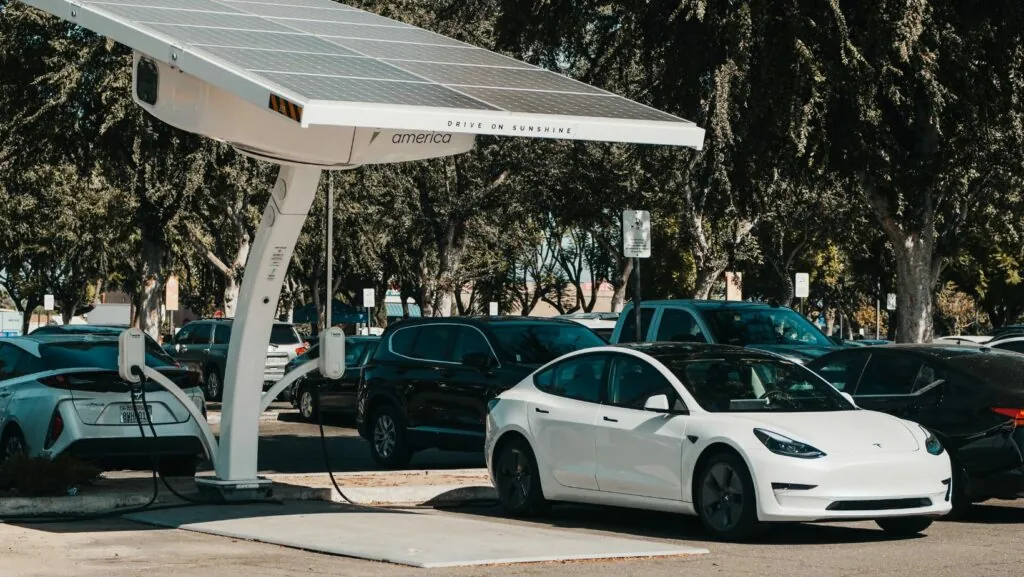Electric vehicles are zooming into the spotlight, and for good reason. With their sleek designs and eco-friendly vibes, they’re not just cars; they’re a lifestyle choice. Imagine driving past gas stations with a smug smile, knowing you’re saving the planet and your wallet. Who knew saving the Earth could feel so good?
Table of Contents
ToggleOverview of Electric Vehicles
Electric vehicles (EVs) represent a shift in how people think about transportation. These vehicles utilize electric motors powered by rechargeable batteries instead of traditional internal combustion engines. The movement toward EVs gains momentum as advancements in technology continue to improve battery life and charging speed.
Manufacturers produce a wide range of electric vehicles, including compact cars, SUVs, and even trucks. Notable examples include the Tesla Model 3, Chevrolet Bolt EV, and Ford Mustang Mach-E. Many options are available to suit diverse consumer needs.
Charging infrastructure plays a crucial role in the EV landscape. Public charging stations have increased significantly, with over 100,000 stations available across the United States as of 2023. Home charging units offer convenience, allowing drivers to recharge their vehicles overnight.
Cost savings and environmental benefits are primary factors influencing the growth of electric vehicles. Owners typically save on fuel expenses, reducing their overall transportation costs. Additionally, electric vehicles produce zero tailpipe emissions, contributing to cleaner air and reduced greenhouse gas emissions.
Government incentives further encourage the adoption of EVs. Tax credits and rebates often make purchasing an electric vehicle more affordable, attracting new buyers. Various states have implemented programs to support EV infrastructure development, showcasing commitment to a sustainable future.
Consumer awareness and acceptance of electric vehicles continue to increase. Educational campaigns emphasize the long-term savings and benefits associated with driving an EV. As more people embrace this technology, the market will likely expand, fostering innovation and competition among manufacturers.
Benefits of Electric Vehicles
Electric vehicles provide numerous advantages that enhance their appeal to consumers.
Environmental Impact
Electric vehicles significantly reduce air pollution. EVs emit no tailpipe emissions, contributing to cleaner air and healthier communities. Studies indicate that the widespread adoption of EVs can lower greenhouse gas emissions and combat climate change. Transitioning to electric transportation helps preserve natural resources and decreases reliance on fossil fuels. By choosing an EV, drivers actively participate in efforts to protect the environment for future generations. The shift to electric mobility aligns with global sustainability goals and encourages the development of renewable energy sources.
Cost Savings
Cost savings represent a major benefit of electric vehicle ownership. EV owners save substantially on fuel costs compared to traditional gasoline vehicles. The average cost of electricity for charging is lower than gasoline prices, leading to significant savings over time. Maintenance expenses also decrease, as electric vehicles have fewer moving parts and require less frequent service. Federal tax credits and local rebates can further offset the initial purchase price, making EVs more affordable. Many drivers discover that the long-term savings on fuel and maintenance present a compelling financial case for making the switch to electric vehicles.
Types of Electric Vehicles
Electric vehicles (EVs) come in several types, each serving different needs and preferences. Understanding the distinctions helps consumers make informed choices.
Battery Electric Vehicles (BEVs)
Battery electric vehicles run solely on electricity stored in large batteries. These vehicles produce zero tailpipe emissions, contributing to improved air quality. BEVs offer an extended driving range with efficiency, exemplified by models like the Tesla Model 3 and Nissan Leaf. Charging locations, including over 100,000 public stations in the U.S., enhance convenience. Home charging units allow for overnight power-ups, saving time and providing cost benefits. Owners enjoy lower maintenance costs due to fewer moving parts compared to traditional vehicles. Innovative battery technology continuously improves the range, making BEVs an appealing choice for eco-conscious consumers.
Plug-in Hybrid Electric Vehicles (PHEVs)
Plug-in hybrid electric vehicles combine electric motors with traditional gasoline engines. These hybrids permit drivers to switch between electric and gasoline modes, providing flexibility. PHEVs typically feature smaller batteries compared to BEVs, allowing for short electric-only commutes while still having gasoline backup for longer trips. The environmental impact is reduced compared to conventional vehicles, yet they still contribute some emissions. Models like the Chevy Volt and Toyota Prius Prime showcase this technology. Owners benefit from savings on fuel, especially when primarily using electric power. Government incentives often apply, making PHEVs an attractive option for those transitioning to full electricity.
Challenges Facing Electric Vehicles
Electric vehicles encounter several challenges that impact their widespread adoption and usability. Understanding these challenges is crucial for both manufacturers and consumers.
Charging Infrastructure
Charging infrastructure presents a significant hurdle for electric vehicles. Public charging stations in the U.S. surpassed 100,000 as of 2023, yet availability varies by region. Many urban areas enjoy convenient access, while rural locations often struggle. Home charging options alleviate some concerns, but not every household has a garage or a suitable outlet. Fast chargers make long trips easier, yet the overall network still needs expansion and improvement. Increased investment in charging infrastructure will enhance convenience, encouraging more drivers to switch to electric.
Battery Technology and Range
Battery technology directly influences the performance of electric vehicles. Many EVs rely on lithium-ion batteries, which provide decent energy density but face limitations. Current battery ranges typically fall between 100 and 400 miles on a single charge. Longer ranges help ease range anxiety, an issue for many potential buyers. Innovations like solid-state batteries promise to enhance performance and lifespan but remain in development stages. Charging time also affects convenience; quick-charge stations can replenish batteries in about 30 minutes, while standard chargers take several hours. Improvements in battery technology will address range concerns and boost consumer confidence.
The Future of Electric Vehicles
Electric vehicles are gaining momentum, presenting a promising outlook for the automotive industry. Projections indicate that EV sales are expected to reach 30% of the global market share by 2030. Innovations in battery technology will significantly enhance driving ranges and charging speeds in the coming years.
Major manufacturers are investing heavily in research and development, leading to breakthroughs in solid-state batteries. These advancements will address current range limitations and improve overall efficiency for drivers. As governments prioritize sustainability initiatives, the adoption of electric vehicles is likely to be accelerated through continued incentives and rebates.
The expansion of charging infrastructure remains a focal point for future growth. Anticipated investments will increase the number of public charging stations, making long-distance travel more accessible. Urban centers are likely to see quick advancements, while rural areas will benefit from targeted initiatives to improve accessibility.
Corporate fleets are also shifting towards electrification, with prominent companies committing to sustainable practices. As electric vehicles become the standard for new fleet acquisitions, cost savings on fuel and maintenance will influence more businesses to transition.
Collaborations between automakers and energy providers will foster an integrated approach to supporting EV adoption. These partnerships can lead to innovative charging solutions designed to streamline energy flow to public charging stations and home units.
Enhanced consumer awareness campaigns are set to provide vital information about electric vehicle advantages, including environmental impact and financial benefits. As individuals gain insights, the perception of electric vehicles shifts, making them more appealing choices.
The future of electric vehicles looks bright as they continue to gain traction among consumers. With advancements in battery technology and expanding charging infrastructure, the barriers to adoption are gradually diminishing.
As more drivers recognize the environmental and financial benefits of EVs, the market is poised for significant growth. Innovations in design and functionality will further enhance their appeal, making electric vehicles a mainstream choice.
The shift towards electrification isn’t just a trend; it’s a movement towards a sustainable and responsible way of driving. Embracing electric vehicles marks a pivotal step in creating a cleaner and greener future for all.




